10 Types of Marketing Emails to Boost Engagement and Drive Sales
Email marketing isn’t just another marketing tactic—it’s the backbone of many successful campaigns. Over the years, we’ve had the privilege of helping countless clients transform their email strategies, driving more engagement and revenue. By strategically using these 10 types of marketing emails, our clients have seen dramatic improvements in their marketing efforts.
1. Welcome Emails: Make a Memorable First Impression
One of our clients, a boutique e-commerce store, struggled to engage new subscribers. After implementing personalized welcome emails that thanked subscribers for joining and offered a 10% discount, they saw a 70% higher open rate and a 25% increase in first-time purchases.
Why They Work: Welcome emails set the tone for the customer relationship. They offer a chance to make a strong first impression while introducing your brand.
Best Practices:
- Include a warm, personalized greeting.
- Highlight your brand’s unique value proposition.
- Add a CTA, such as “Explore Our Bestsellers” or “Shop Now.”
Pro Tip: Link to your “About Us” page or a beginner’s guide to showcase your brand’s story and build trust.
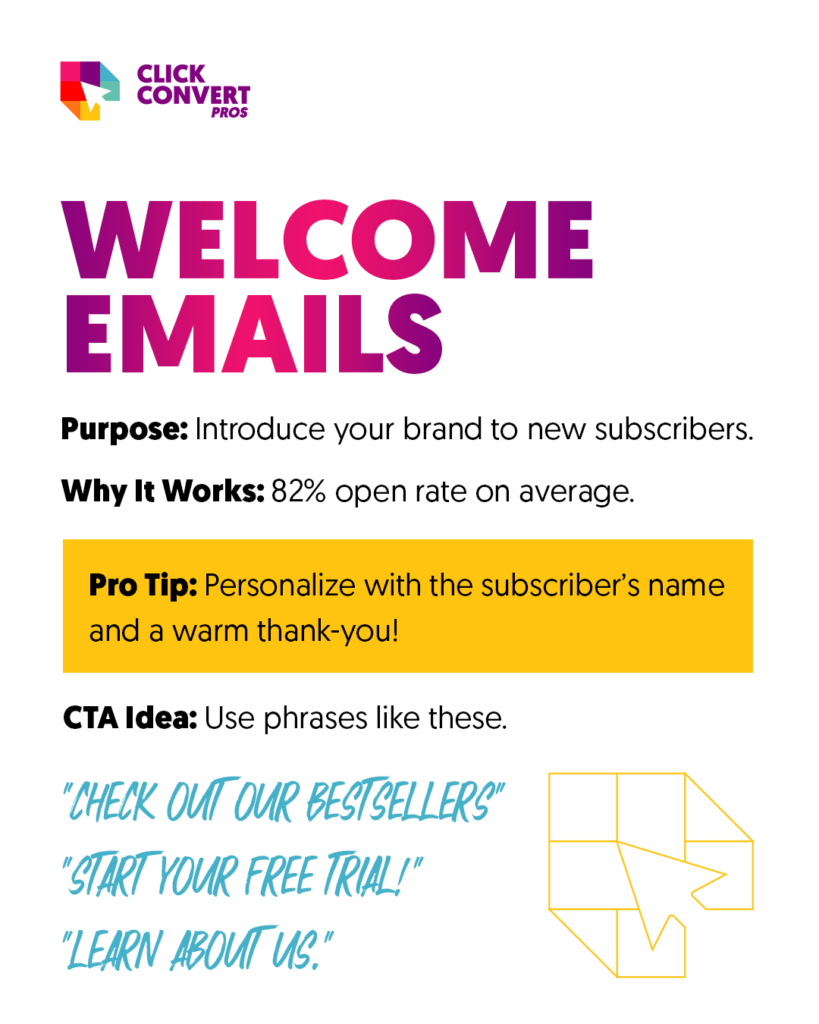
2. Promotional Emails: Create Urgency and Drive Sales
A subscription box service we worked with was hesitant to run flash sales, fearing it might seem “too pushy.” With our guidance, they launched a promotional email series offering 20% off for 48 hours. The result? A 35% increase in revenue over that weekend.
Why They Work: Promotional emails create a sense of urgency and capitalize on FOMO (fear of missing out), encouraging immediate action.
Best Practices:
- Use bold subject lines like, “Don’t Miss Out—20% Off Ends Today!”
- Keep the email visually engaging with high-quality product images.
- Focus on a single, clear CTA, such as “Shop Now.”
Pro Tip: Link to your highest-converting products or limited-time offers for maximum results.
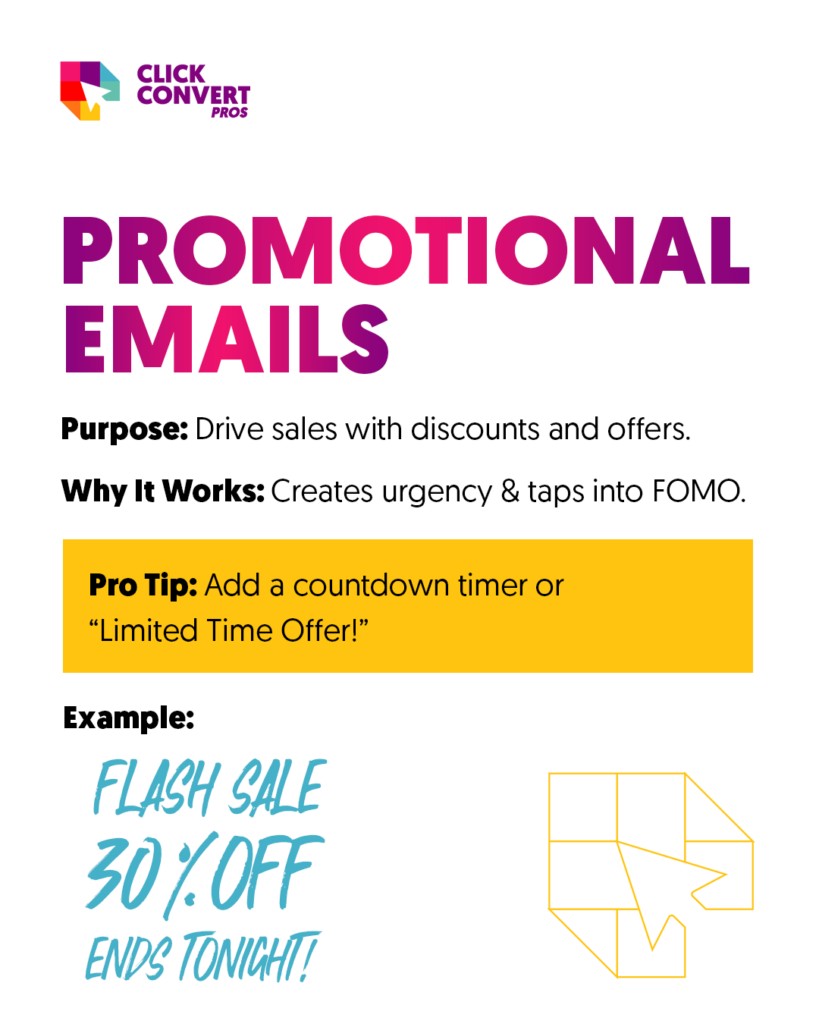
3. Newsletter Emails: Keep Subscribers Engaged
One of our SaaS clients wanted to stay top-of-mind for their subscribers but wasn’t sure how. We helped them develop a monthly newsletter featuring product tips, industry trends, and case studies. Within three months, their engagement rate doubled, and inbound leads increased by 20%.
Why They Work: Newsletters keep your audience informed and engaged without being overly salesy. They help you maintain consistent communication and build loyalty.
Best Practices:
- Share a mix of content, such as tips, product updates, and blog posts.
- Keep it visually appealing with clear headings and images.
- Maintain a consistent schedule, whether it’s weekly or monthly.
Pro Tip: Include links to related blog posts or case studies to drive traffic and improve internal SEO.
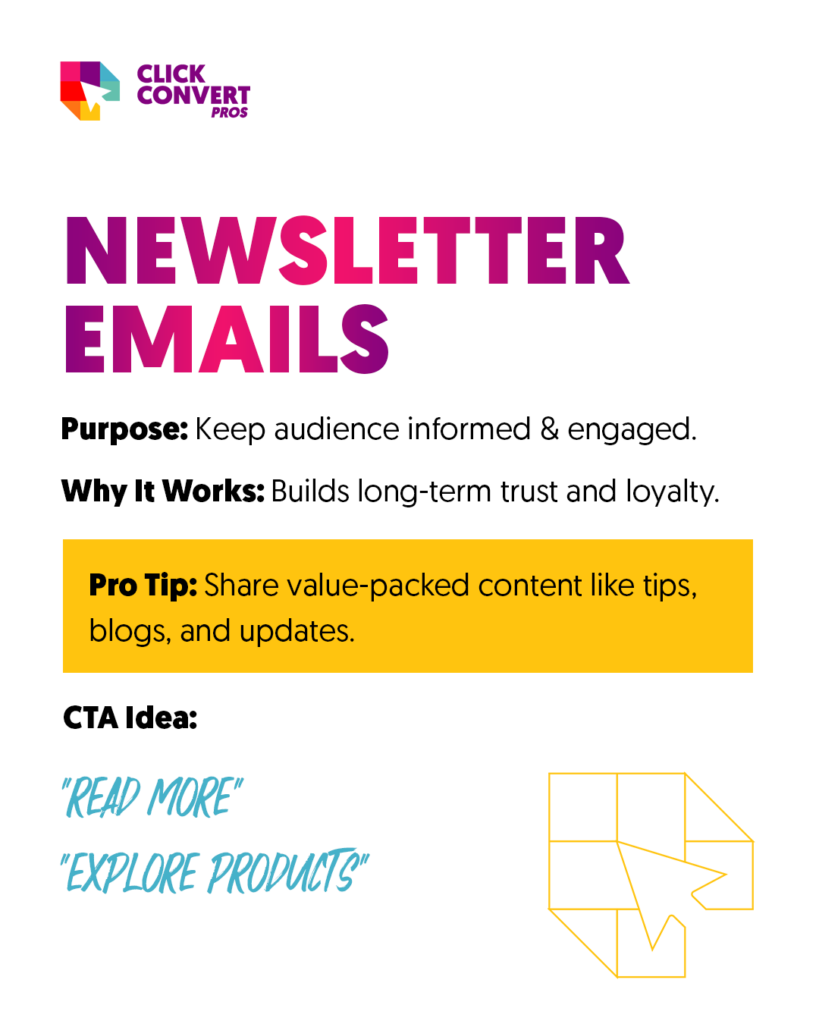
4. Abandoned Cart Emails: Recover Lost Sales
We helped a client in the fashion industry recover 20% of their abandoned carts by implementing a three-part abandoned cart email series. The emails included reminders, personalized product suggestions, and a small incentive to complete the purchase.
Why They Work: Abandoned cart emails target customers who are already interested but need a gentle nudge to complete their purchase.
Best Practices:
- Mention the specific items left in the cart.
- Include a clear CTA, such as “Return to Your Cart.”
- Offer an incentive, like free shipping or a small discount.
Pro Tip: Add links to related products or a customer support page to address common concerns.
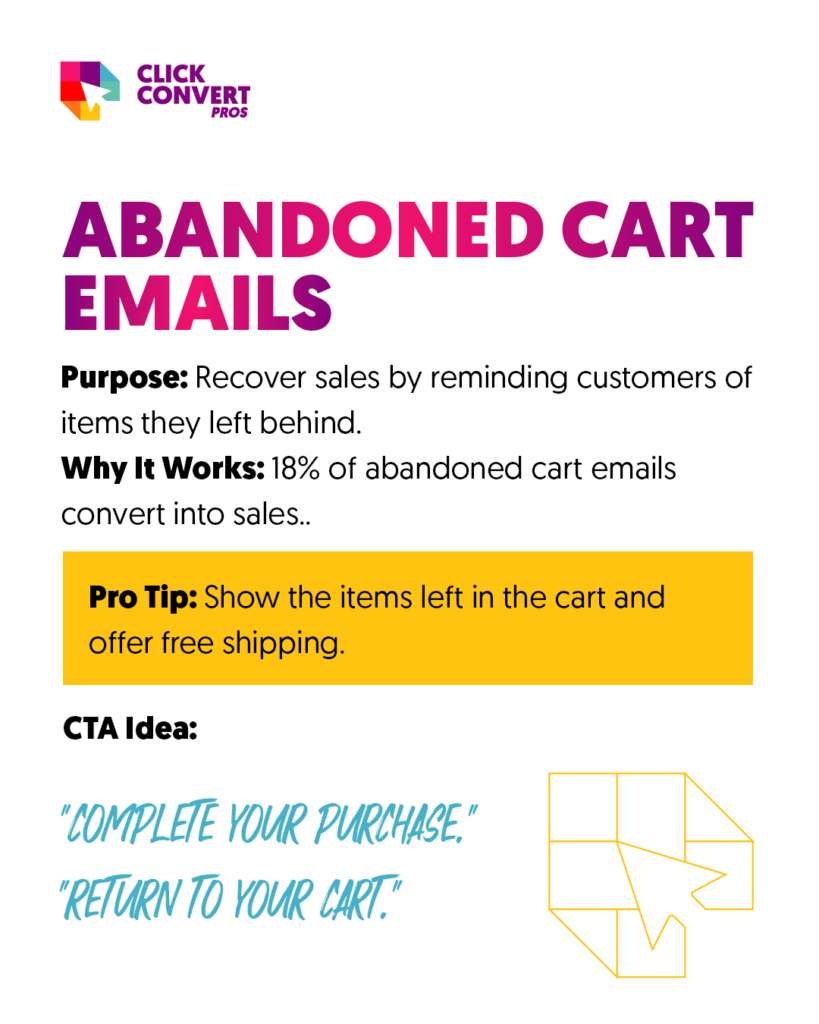
5. Re-Engagement Emails: Bring Subscribers Back
An influencer we worked with was losing touch with a portion of their subscriber list. We helped them craft a re-engagement campaign featuring a warm message and a special offer. The result? They reactivated 30% of dormant subscribers.
Why They Work: Re-engagement emails give you a chance to rekindle relationships and remind subscribers why they signed up in the first place.
Best Practices:
- Use friendly subject lines like “We Miss You!”
- Provide an incentive, such as a discount or exclusive content.
- Ask subscribers to update their preferences or confirm their interest.
Pro Tip: Include a link to a quick survey to gather insights on why subscribers became inactive.
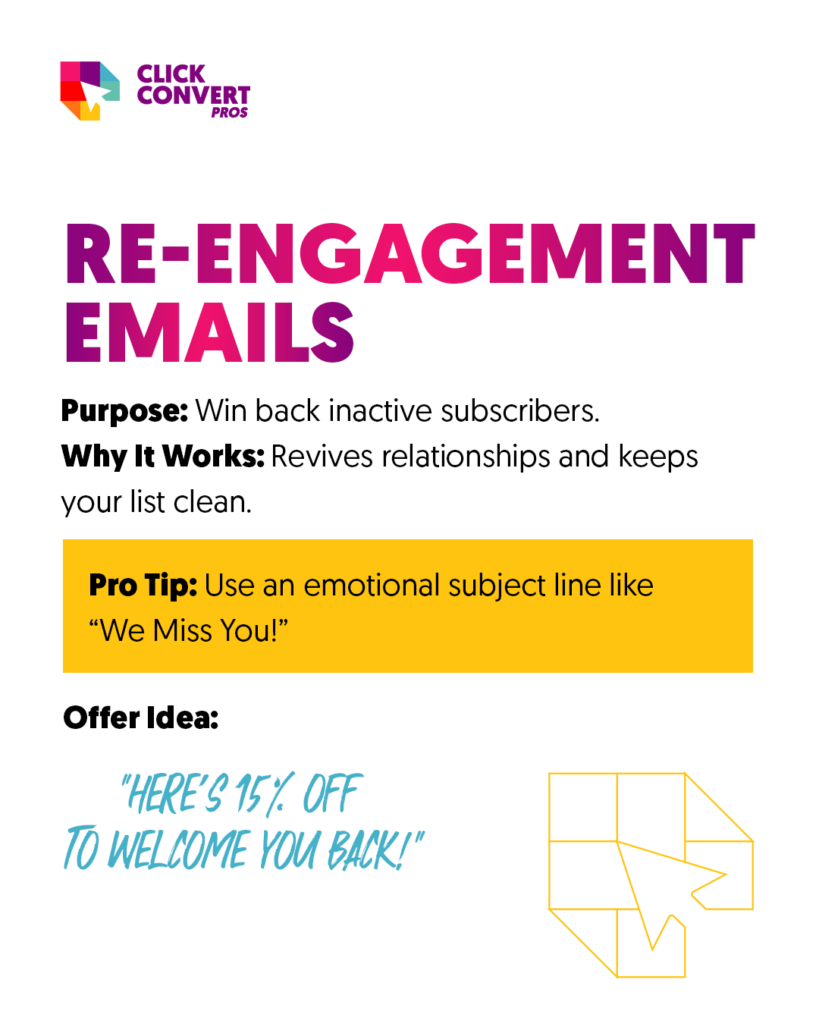
6. Transactional Emails: Build Trust Through Transparency
One of our clients, an online electronics retailer, wanted to improve customer trust. We revamped their transactional emails to include order details, tracking links, and product recommendations. Customers appreciated the transparency, and cross-sell conversions increased by 15%.
Why They Work: Transactional emails are expected by customers, making them highly likely to be opened. They offer an opportunity to reassure and delight your audience.
Best Practices:
- Focus on providing clear, concise information about the transaction.
- Add links to helpful pages, such as tracking or return policies.
- Include subtle upsell opportunities, like “Complete Your Setup with These Accessories.”
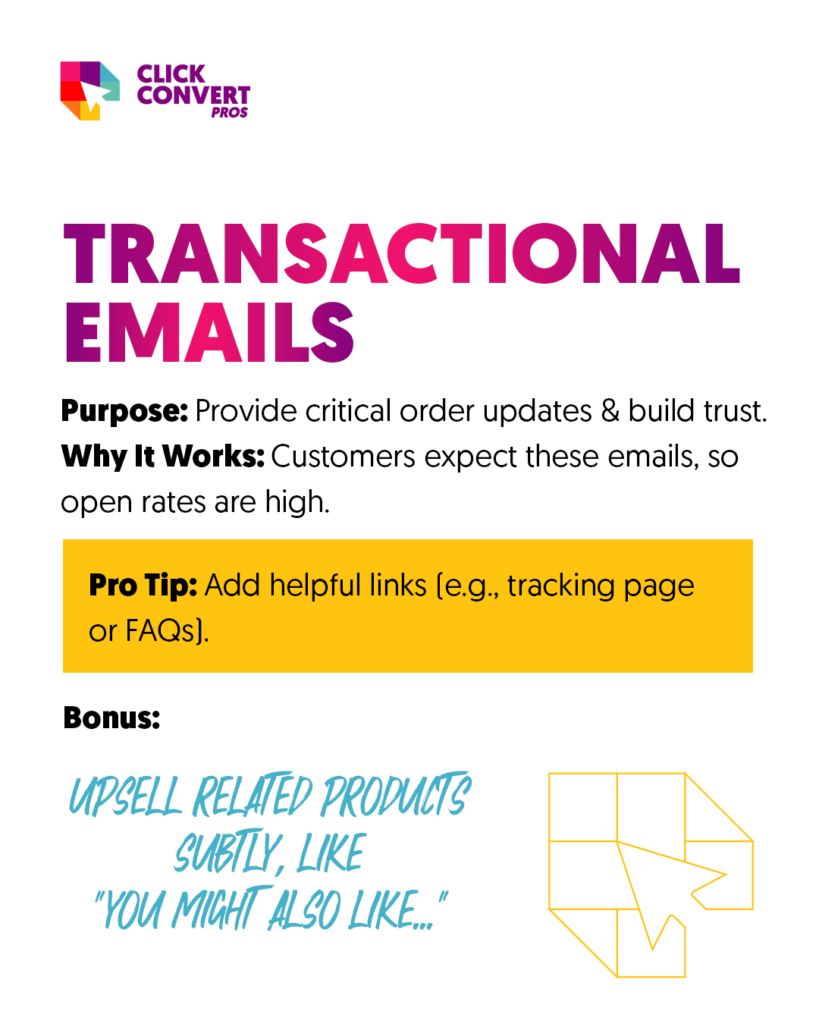
7. Product Launch Emails: Build Anticipation
For a tech startup launching a new app feature, we designed a teaser campaign followed by a launch email. The teaser emails built excitement, while the launch email included a demo video and CTA. They achieved a 60% higher adoption rate within the first week of release.
Why They Work: Product launch emails create anticipation and drive excitement, especially when paired with teaser campaigns.
Best Practices:
- Use bold visuals and concise messaging.
- Highlight the unique benefits of the product or feature.
- Include a strong CTA, like “Learn More” or “Get It Now.”
Pro Tip: Link to a detailed blog post or landing page explaining the new product or feature.
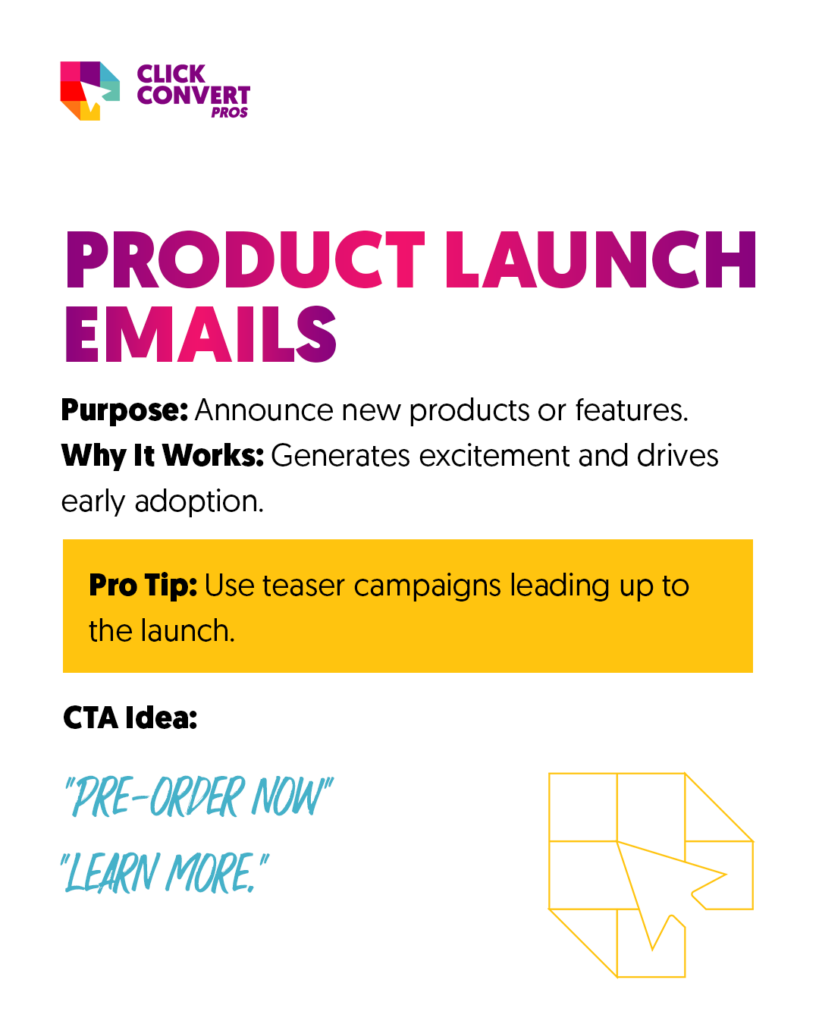
8. Customer Feedback Emails: Show You Care
One of our clients in the fitness industry used feedback emails to improve their services. By offering a small incentive for completing a short survey, they received valuable insights and increased customer retention by 25%.
Why They Work: Feedback emails show customers that their opinions matter and help businesses improve their offerings.
Best Practices:
- Keep surveys short and easy to complete.
- Use a friendly tone, like “We’d love your input!”
- Offer an incentive for participating, such as a discount or entry into a giveaway.
Pro Tip: Link to a thank-you page that includes a special offer or exclusive content.
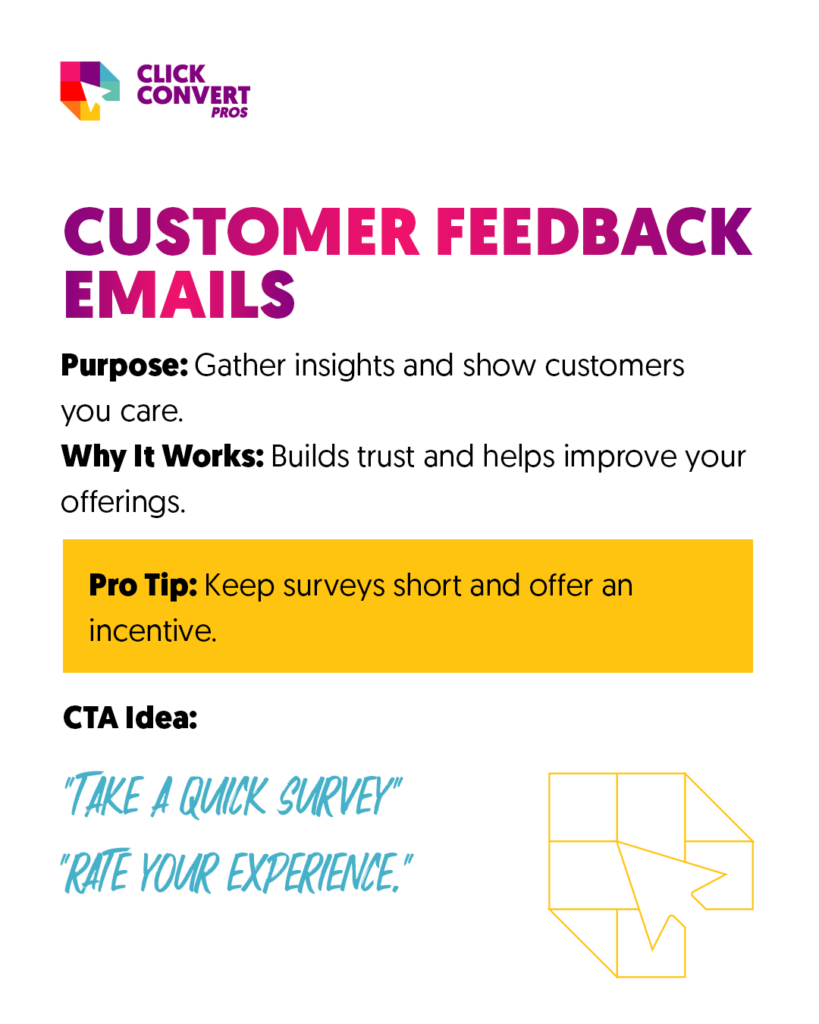
9. Seasonal Emails: Take Advantage of Timely Themes
A retail client we worked with doubled their holiday sales by running a series of festive seasonal emails. The campaign included gift guides, limited-time deals, and holiday greetings that resonated with their audience.
Why They Work: Seasonal emails tap into timely themes and emotions, encouraging subscribers to act while the occasion feels relevant.
Best Practices:
- Personalize emails to the specific holiday or season.
- Use festive visuals and messaging.
- Offer holiday-exclusive discounts or bundles.
Pro Tip: Link to curated gift guides or seasonal collections for easy navigation.
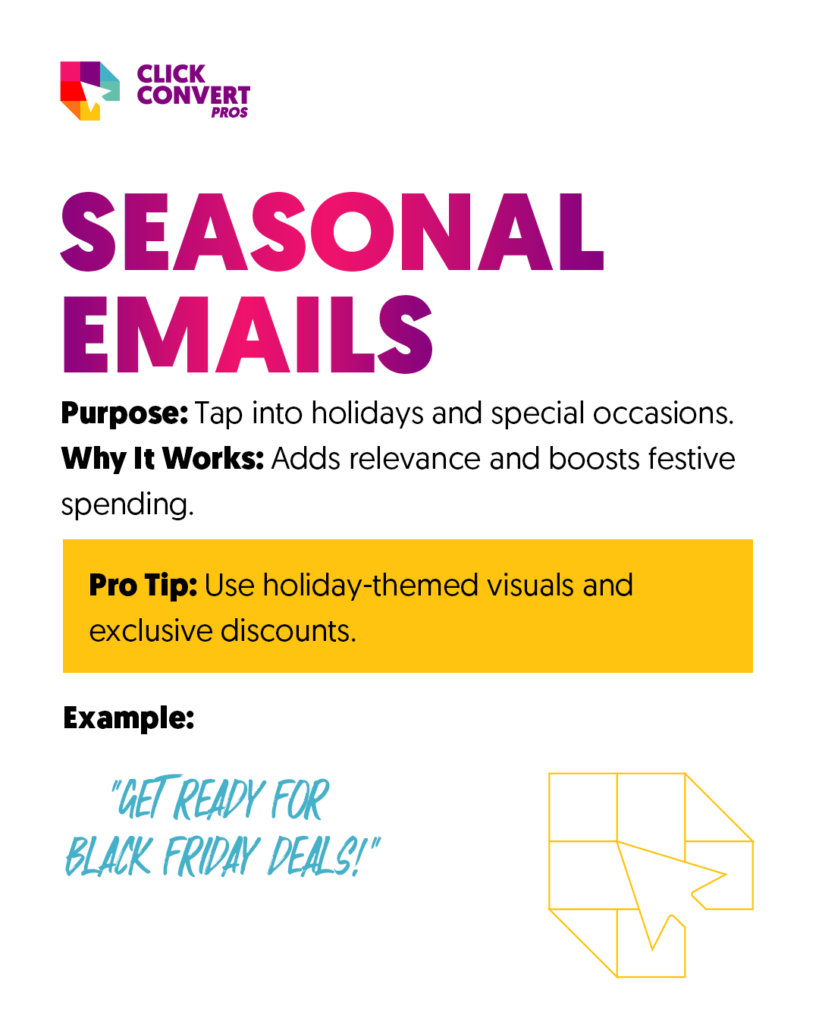
10. Upsell and Cross-Sell Emails: Increase Customer Value
For an online supplement retailer, we introduced upsell emails suggesting complementary items. For example, “You bought whey protein—how about adding BCAA’s?” These emails increased their average order value by 20%.
Why They Work: Upselling and cross-selling emails maximize the value of each customer by encouraging additional purchases.
Best Practices:
- Personalize recommendations based on purchase history.
- Highlight how complementary products add value.
- Create urgency with limited-time offers.
Pro Tip: Link to bundle deals or product comparison pages for added value.
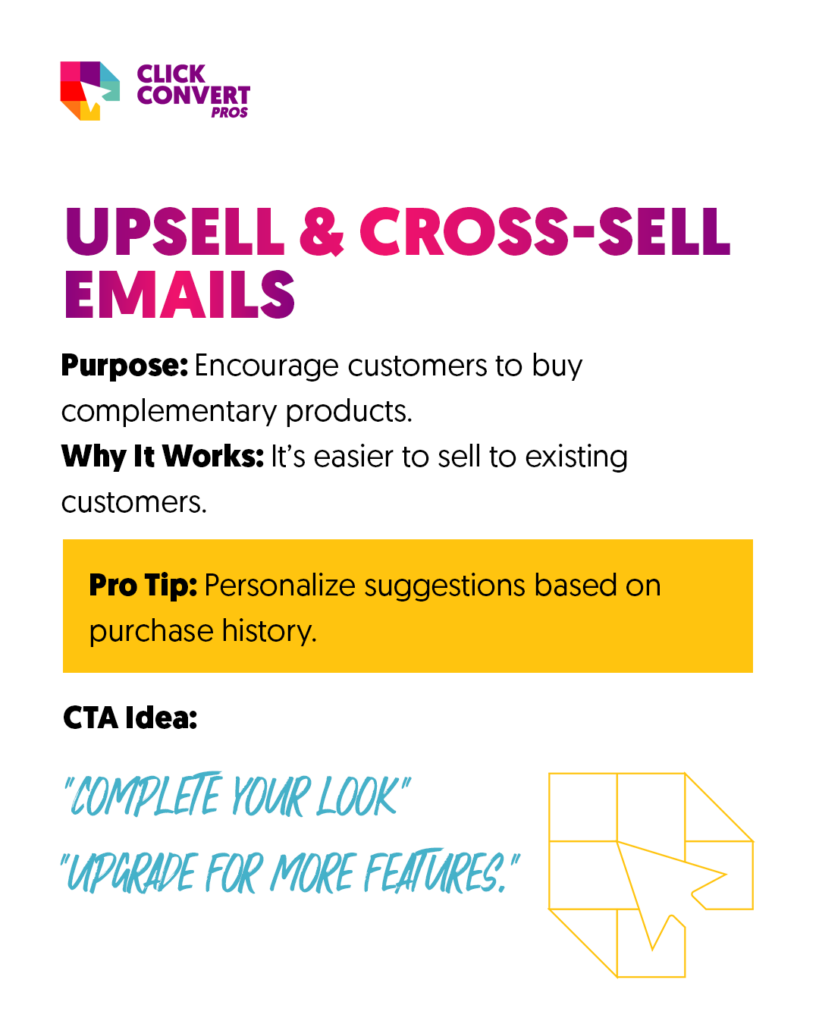
Final Thoughts: Make Emails Work for Your Business
The success stories we’ve shared prove that email marketing, when done right, can drive incredible results. Whether it’s recovering lost sales with abandoned cart emails or boosting engagement with newsletters, these 10 email types can revolutionize your strategy.
Ready to start? Focus on personalizing your messages, providing value, and keeping communication consistent. And remember, it’s not just about selling—it’s about building trust and relationships with your audience.
FAQs
1. How do I decide which email type to prioritize?
Look at your goals. If you need more sales, start with abandoned cart emails or promotional emails. For building trust, focus on newsletters and feedback emails.
2. How often should I send marketing emails?
It depends on your audience and strategy. Weekly or bi-weekly emails are a good starting point, but consistency is key.
3. What’s the best way to measure success?
Track metrics like open rates, click-through rates, and conversion rates. A/B testing is also helpful for optimizing your emails.
